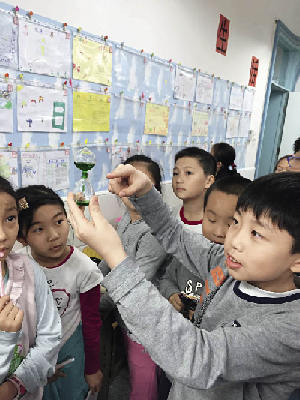 |
|
Teamwork and cross-curricular approaches are now incorporated into standard primary school subjects.[Photo/Zhongguancun No.3 Primary School] |
Tap Teacher's Potential
In the traditional education system, cultivating children’s creativity relies largely on teachers’ competence. This includes innovative ideas, ability to organize activities, and an innate innovative demand and drive.
In Organization for Economic Cooperation and Development tests to measure levels of education, primary students in Finland always come top, and there is little difference among achievements at different schools. What is reason for this educational miracle in Finland, a country with a population of only 5.4 million? A survey by the Helsingin Sanomat, Finland’s most widely read newspaper, shows that primary and secondary school teachers enjoy public esteem equal to that of the Finnish president and university professors. Teaching is a sought-after profession among the youth in Finland because it is a chance to become involved in creative learning rather than just teaching knowledge.
In 2005, the 21st Century Education Research Institute conducted a joint survey with learning.sohu.com of 3,012 primary and secondary school teachers from 28 provinces, municipalities, and autonomous regions. The results show that the majority were aware of the importance of innovation in education, and of the urgent need to carry it out.
How do teachers innovate? And if a teacher intends to make changes, how can this be achieved? Xu Li from Wuchang Experimental Primary School believes that unsolved problems are often the starting point for innovation. "I have discovered after 18 years as a teacher that all improvements stem from the desire to solve problems. Questioning voices have been my creative motivation."
The survey also shows that teachers in urban private schools are more confident in this respect than those in public schools. The former group often believes that teaching can be improved through personal efforts. Green-hand teachers with one to four years’ experience expressed a strong desire for innovation without outside pressures. Among the modes of innovation, several were advocated, including reforms to curricula, teaching and research, school management institutions, educational technology and evaluation, and professional teacher development. These findings reflect the importance that Chinese schools attach to innovation, and enhancement of teacher ability.
Close to half of teachers surveyed – 47.8 percent – however, said that innovating while fulfilling existent teaching demands was difficult. A further 57 percent believed that innovations couldn’t be achieved solely through teachers’ personal efforts, and that it would be hard to produce substantive results within schools under the current situation.